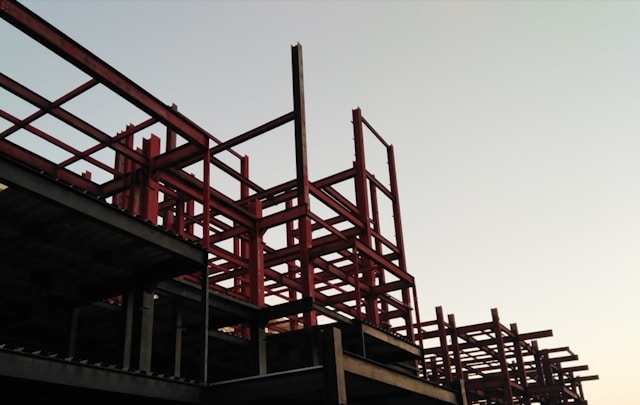Managing Multi-Phase Commercial Builds: Tips From the Field
Multi-phase commercial construction DFW projects require segmenting construction into distinct sequential components while maintaining operational continuity. You’ll need robust scheduling systems, standardized documentation formats, and centralized tracking tools to coordinate vendors across phase changes. Implement 48-hour resolution protocols for RFIs and conduct weekly cross-phase meetings to prevent timeline slippage. Creating buffer zones between trade shifts can accommodate unforeseen delays. The following field-tested strategies will transform potential project disruptions into manageable adjustments.

What constitutes a multi-phase project (e.g., phased occupancy, remodelling in stages)
While many construction projects follow a linear path from groundbreaking to completion, multi-phase commercial builds operate under fundamentally different parameters.
Multi-phase projects divide construction into distinct, sequential segments with separate timelines and deliverables. You’re dealing with a multi-phase approach when your build includes phased occupancy allowing tenant use while construction continues elsewhere, sequential remodeling of operational facilities, or campus-style developments with multiple buildings completed in succession.
In DFW markets, projects often segment work by floor, building wing, or functional area. This approach enables businesses to maintain operations during renovation, generate revenue from completed sections while others progress, and distribute capital expenditures across extended timelines. Phase boundaries typically align with critical infrastructure connections, logical occupancy divisions, or financial milestone requirements.
Key challenges: scheduling, budgeting, maintaining operations
Multi-phase commercial builds present several complex challenges that you’ll need to navigate carefully. Scheduling becomes intricate when you’re coordinating sequential switches between phases while maintaining critical path integrity. Your timeline must account for inspection delays and procurement lead times that can cascade across phases.
Budgeting requires segmented allocation with contingencies for each phase, as costs from early stages can impact subsequent phase funding. You’ll need detailed cost tracking systems to prevent overruns while maintaining liquidity throughout the project lifecycle.
Maintaining operations during construction presents perhaps the most demanding challenge. You’ll need to implement noise mitigation, dust containment, and temporary utility solutions while ensuring stakeholder access. Consider establishing clear communication protocols with occupants to manage expectations during disruptive work periods. Strategic scheduling of high-impact activities during off-hours can minimize operational interruptions.
Communication tools & documentation strategies
Effective communication tools and documentation strategies form the backbone of successful multi-phase commercial builds. You’ll need a centralized digital platform where stakeholders can access real-time updates, RFIs, and change orders. Implement cloud-based project management software that integrates scheduling, document control, and budget tracking.
Document every decision in standardized formats with clear approval chains. Your communication protocol should specify response timeframes and escalation procedures for critical issues. Weekly status reports should track milestone completion against baseline schedules.
For stakeholder alignment, maintain a decision log with rationales and impacts on subsequent phases. Create phase handover checklists detailing requirements between contractors. Remember, thorough documentation isn’t bureaucratic overhead—it’s your protection against scope creep and timeline disputes while ensuring seamless coordination across your project’s multiple phases.
Vendor and subcontractor coordination tips
Coordinating vendors and subcontractors across multiple project phases requires systematic oversight and precise scheduling protocols. Begin by establishing a centralized tracking system that maps dependencies between trades and identifies critical path milestones.
You’ll need to develop standardized onboarding procedures that communicate project-specific requirements, safety protocols, and quality benchmarks. Implement weekly coordination meetings to address potential conflicts and adjust sequencing as needed.
Create buffer zones between trade shifts to accommodate unforeseen delays without cascading schedule impacts. Document performance metrics for each vendor to inform future phase planning and resource distribution.
For maximum efficiency, align material deliveries with installation schedules to minimize on-site storage requirements. When properly executed, this stakeholder-aligned approach guarantees seamless shifts between project phases while maintaining budget and timeline integrity.
Real-world scenarios: retail expansions, medical centers
When examining real-world commercial build scenarios, retail expansions and medical centers present distinct multi-phase challenges. In retail expansions, you’ll need to maintain operations while constructing, often working during off-hours (10pm-6am) to minimize customer disruption. Phase each section (flooring, fixtures, lighting) with 48-hour buffer periods between stages.
Medical centers require stringent infection control protocols throughout construction. You’ll implement negative air pressure environments, HEPA filtration, and daily antimicrobial cleaning. Sequence your phases to isolate construction zones completely from patient areas, with dedicated material delivery routes that avoid cross-contamination.
In both scenarios, you’ll benefit from Merit Contractors’ stakeholder-aligned approach—creating detailed milestone calendars with daily checkpoints and establishing clear communication channels for real-time adjustments when unexpected conditions arise.
How proactive issue tracking supports timelines
The backbone of any successful multi-phase commercial build lies in proactive issue tracking systems that prevent schedule slippage. When you implement digital documentation platforms that flag potential conflicts before they impact critical path activities, you’re effectively safeguarding your timeline milestones.
- Utilize real-time dashboards to monitor material delivery delays, subcontractor coordination, and inspection scheduling
- Implement 48-hour resolution protocols for any items requiring RFIs or change orders
- Establish weekly cross-phase coordination meetings where stakeholders review potential timeline impacts
Merit’s approach integrates these tracking mechanisms across all project phases, ensuring that issues identified in earlier phases inform and protect subsequent work. This systematic monitoring converts potential delays into manageable adjustments, maintaining overall project momentum while preserving your completion targets and budget parameters.
For a broader perspective on why construction plays such a central role in modern society, you may also find this article on the importance of construction in modern development helpful.
